When a study is peer-reviewed, it means that it has undergone a critical evaluation by one or more experts in the same field (peers) before it is published in a scientific journal or presented at a conference. The peer review process is a fundamental aspect of scholarly research and is intended to ensure the quality, […]
Archive | Best Practices
Food and beverage sourcing and selections: background
Food selections for both legs of the study were patterned after a “typical American diet”as defined by the United States Department of Agriculture (USDA). In addition, identical (or extremely similar) foods chosen for each leg needed to be widely available in the United States in a practical manner convenient to other investigators. Absent an unrealistically […]
Possibilities for Further Investigation
This n=1 trial points out two further factors to make a larger trial better able to more accurately determine causality between human clinical health indicators and BPA and other plastic-derived chemicals. This ad-free article is made possible by the financial support of the Center for Research on Environmental Chemicals in Humans: a 501(c)(3) non-profit. Please consider […]
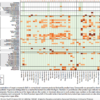
Reducing Non-Food Exposures in Dietary Intervention
Attempts can be made to reduce non-food exposures (NFEs) in dietary intervention studies. However, it is impractical (and probably impossible) to eliminate them. Plastic micro- and nanoparticles, as well as the chemical compounds used to produce, are ubiquitous in the environment and present formidable confounding factors that make it impossible to establish causal relationships between […]
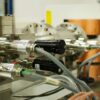
SSHS-Supplemental Material – Mass Spectrometry
Serum BPA and Conjugate Analysis Report_OSU 2021 Updated-LinusPauling-serumdata_10212021-1 This ad-free article is made possible by the financial support of the Center for Research on Environmental Chemicals in Humans: a 501(c)(3) non-profit. Please consider making a tax-deductible donation for continued biomedical research.
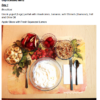
Stealth Syndrome Study – Typical and Intervention Diets
StealthSyndromeStudy-TrialMenu-InterventionDiet-Recipes StealthSyndromeStudy-Trial-Menu-TypicalDiet For food and menu selection, please see the full revised protocol and appendices at this PDF document This ad-free article is made possible by the financial support of the Center for Research on Environmental Chemicals in Humans: a 501(c)(3) non-profit. Please consider making a tax-deductible donation for continued biomedical research.

Professional-Grade Kitchen – Wood, Glass & Stainless Steel
We removed the flowers and other non-investigation materials. This ad-free article is made possible by the financial support of the Center for Research on Environmental Chemicals in Humans: a 501(c)(3) non-profit. Please consider making a tax-deductible donation for continued biomedical research.
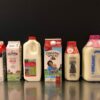
How Dairy Products Complicated Our 2022 Study – And What We Had To Do To Solve The Issue
When we conducted the investigation for our 2022published paper, the goal was to create a menu that was a “typical” American diet as defined by the U.S. Department of Agriculture. That “typical” diet demanded that we include cow’s milk. And that was a problem. Dairy has many opportunities for plastic contamination For dairy products, we […]
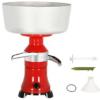
The Cream Separator From Hell = No Cheese & Butter As Originally Planned. (And Reflected Flawed Logic and Impossible Logistics)
Cream separator, as sold.Even if we had solved the reproducibility conflicts with our “close to source, minimum contamination” plans for milk, the final problem was the fact that the only small-production cream separator we could find was full of plastic parts and “stainless steel” that was actually aluminum. That despite the fact that the seller […]